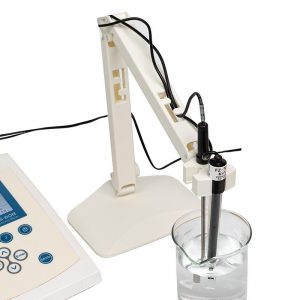Several common electrode types for conductivity meters
Conductivity meters use different types of electrodes to make conductivity measurements. The following are some common types of conductivity sensing electrodes:
Glass electrode: Glass electrode is a common type of conductivity sensing electrode that is suitable for general water quality measurement. It has good chemical tolerance and stability and is able to work over a wide pH range.
Several common electrode types for conductivity meters
Carbon electrode: Carbon electrode is another common type of conductivity sensing electrode and is suitable for measuring samples with low conductivity. Carbon electrodes are commonly used for measurements in pure water, ultrapure water, and other solutions with low ion concentrations.
Stainless steel electrodes: Stainless steel electrodes are suitable for some special industrial environments and applications, such as sewage treatment, chemical industry, etc. Stainless steel electrodes have better corrosion resistance and durability, and are suitable for handling samples containing chemicals.
Titanium electrodes: Titanium electrodes are the type of conductivity sensing electrode used for special applications such as seawater measurement and measurement of samples containing strongly oxidizing substances. Titanium electrodes have corrosion resistance and chemical stability.
In addition, there are other electrodes of special materials that can be used for specific applications. For example, gold electrodes are used for high-precision measurements and special liquid measurements, platinum electrodes are used for high temperature and corrosive sample measurements, etc.
Several common electrode types for conductivity meters
The exact choice of electrode type should be based on application requirements, sample characteristics and instrument specifications. When choosing a conductivity meter, you can usually choose an instrument with the corresponding electrode type according to the actual needs, or purchase different types of electrodes according to the specific application requirements to replace and adapt to different measurement requirements.

